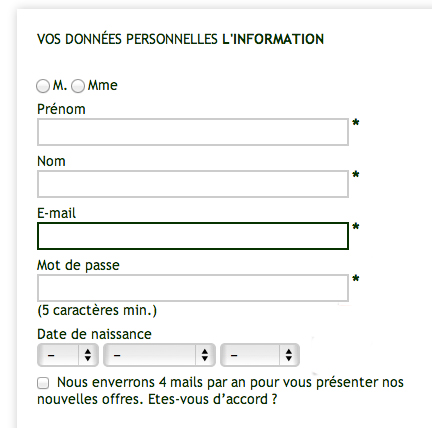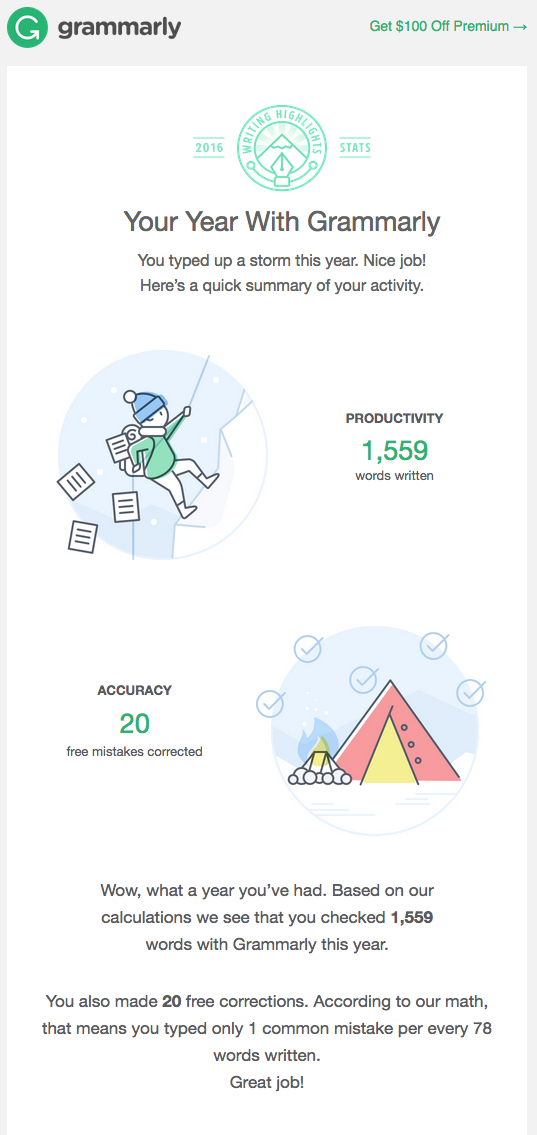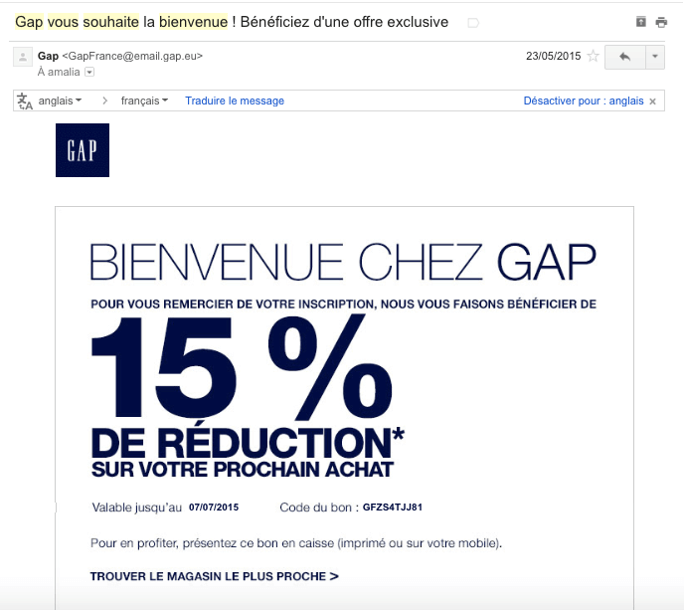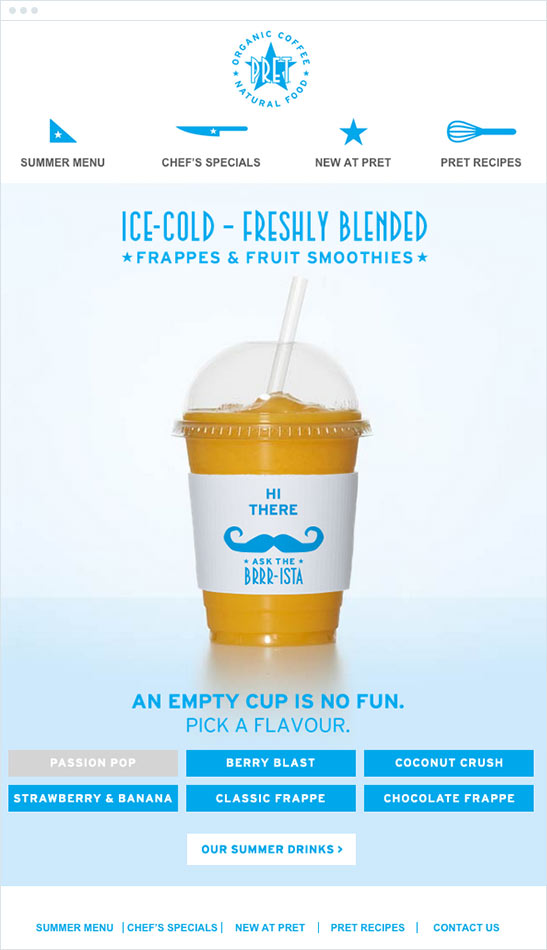
12 Ways to Improve Email Marketing
In 2021, it is still possible to say that no, e-mail is not dead! More than 225 billion emails are sent every day each year.
From a marketing point of view, e-mail is a valuable tool to connect with your customers. Like all marketing tactics, it is constantly adapting to changing customer preferences. So now is the time to review the 2021 email marketing best practices.
Email marketing best practices in 2021
1 – Build a good mailing list
Although developing a mailing list can sometimes be time consuming and frustrating, don’t be tempted to resort to buying email addresses.
This practice should be avoided for two reasons:
- The mailing list you get is likely to be of poor quality.
- A huge mailing list will not generate more clicks and opens if it is not qualified.
In fact, sending an unexpected email to recipients who have not chosen to subscribe to your newsletter (and may have never even heard of you) may condemn you to end up in your recipients’ spam folder.
Instead, try to build your mailing list properly in two ways:
- Encourage your users to subscribe by offering them a promotion on a product or access to a white paper.
- Promote your newsletter sign-up on your website, blog, landing pages, thank you pages (after users have filled out a form or made a purchase), order confirmation emails and at PR events.
Above all, don’t take your subscribers for a ride. When they fill in their email address, make it clear what they are signing up for. To do this, the best practice is to set up an opt-in principle (or even a double opt-in principle).
Indeed, a visitor who creates an account on your site or participates in one of your contests does not necessarily want to receive your marketing emails.
So, when they sign up, don’t forget to add an unchecked field allowing the user to click on it only if they agree to receive your newsletter.
This way, you build a list of subscribers who are truly engaged and motivated to receive your marketing emails.
2 – Avoid spam with your marketing emails
For some years now, mail servers have been using filtering systems to determine which e-mails end up in the spam folder of inboxes.
To avoid being one of them, make sure you meet these few criteria:
- Only collect email addresses from subscribers who have given you their consent to send emails.
- Clearly state your entity in your emails, specifying several ways a customer can contact you (phone number, address, links to your social media profiles).
- Avoid sending too many marketing emails in a short period of time.
- Avoid excessive use of capital letters and exclamation marks. Many readers associate capital letters, exclamation marks and other symbols with spam. This is also the case for automatic email filters.
- Make it easy to unsubscribe by including a clear link in your email. If your subscribers can’t unsubscribe from your mailing list, they will tend to report you as spam.
- Clean up your address book by getting rid of any bouncing email addresses. Every recipient on your list who receives, but never opens, your emails is taken into consideration by the filters of the email platforms to determine if a message is spam or not.
3 – Monitor the engagement of your marketing emails
The fact is that people who subscribed to your newsletter two years, two months or even two weeks ago may no longer be interested in your emails. So you need to constantly monitor your engagement metrics, such as open rates, clicks and unsubscribes.
You can also set up a re-engagement campaign. This is a great way to keep your mailing list up to date, and to remove inactive addresses.
To do this, determine your deletion rates and the recipients who have consistently shown low engagement rates. Send them an email asking if they are still interested in receiving your messages or if they would like to change the frequency of receipt.
This will help you create a more efficient mailing list and, as a bonus, will remind your customers that you care about reducing the number of unnecessary emails they receive. To better hope to re-engage them, you can include a special offer.
If your re-engagement campaign is not working with some subscribers, remove them from your list. In any case, it will always be better to send your emails to a small list of very committed recipients, rather than to a huge list that never commits.
4 – Personalize your marketing emails
Personalized emails get 29% higher open rates and 41% higher click-through rates.
Why not take advantage of all the data you have on your customers to personalize the emails you send them?
In 2021, personalization means more than just calling the recipient by their first name. You can go further with customer segmentation that will allow you to send the right message to the right person at the right time.
You can segment your subscribers based on their online behaviors, the actions they take and by identifying their interests or preferences:
- What emails do they open?
- What emails do they click on?
- What are their hours of operation?
- What have they been buying lately?
- Where do they live?
You can collect this type of information by integrating Google Analytics. This tool will allow you to view your email bounce rates, compare the performance of each email, get demographic information and, of course, track the opens and clicks of each of your marketing emails.
Based on this segmentation work, you can save mailing lists according to different criteria and thus better personalize your e-mails.
In addition to segmentation, you can also try other personalization methods, such as dynamic content. With dynamic e-mail, content is personalized for each subscriber, based on the data you have about them.
Example below with Grammarly, a spelling and grammar correction tool, which created a dynamic email marketing to show a subscriber how they used the service in 2021:
Thanks to the dynamic content, the numbers included in the e-mail are unique for each subscriber. By using dynamic content like this, the recipient can get a personalized snapshot of their account information.
You can easily produce basic dynamic content with a tool like AWeber. To do this, create a sign-up form that asks your subscribers for personal information beyond their first and last names. Then use custom fields in your email to extract subscriber-specific information.
5 – Automate your marketing emails
Companies using automation see 53% higher conversion rates compared to those not using it.
For some brands, automatically sent mails, such as welcome mails or cart abandonment reminders, generate the majority of their e-mail marketing revenues.
Discover also our best practices for cart abandonment reminder emails
So if you’re not using email automation yet, 2021 is the time to start! Here are some email types to apply automation with:
- Welcome / thank you email to a user for subscribing.
- E-mail reminders of upcoming sales and events.
- Post-purchase follow-up e-mail.
- Behaviour-triggered e-mail: abandoned shopping cart, no connection to your website for a long time, etc.
You can also use automation to send an email thanking the subscriber on the anniversary of their membership. This simple practice can boost retention by making valued customers feel valued.
For example, you could consider sending a secret special offer to your customers who subscribed to your mailing list more than 2 years ago and have made a purchase at least once on your e-commerce.
6 – Optimize the CTA(s) of your marketing emails
Your call(s) to action (CTA) is one of the most important elements of your e-mail marketing, as it encourages subscribers to click on your content.
If you’re promoting a sale or want your subscribers to download an eBook, a single CTA should suffice. But sometimes multiple calls to action may be appropriate.
When designing your CTA(s), focus on the following 4 ideas:
- Location: CTAs placed at the bottom of an email marketing see an average 17% increase in conversions, compared to those placed at the top or in the middle.
- Design: choose the right colour and make your CTA stand out from the rest of the content.
- Context: create contextual content and leave enough space around your CTA to catch the eye and help motivate a click.
- Clarity: be both clear and concise in your request.
7 – Give value to your e-mail marketing
E-mail marketing can sometimes be perceived by recipients as too toxic or promotional.
So don’t ask too much of your subscribers right from the start, keeping only your sales in mind. E-mail marketing is as much about relationship building as it is about lead acquisition. That’s why every interaction you have with your subscribers should provide them with value.
Before encouraging them to buy one of your products, or sign up for one of your services, offer them first an interesting, entertaining information or a good deal. For example, you can:
- Refer them to a white paper with useful tips about your industry.
- Share with them a “Top 10” list of information.
- Provide them with a discount code.
8 – Pay attention to the subject line of your e-mail marketing
33% of recipients decide whether or not to open an e-mail by reading the subject line.
The subject line is the first thing your subscribers see when they receive your e-mail marketing. It is therefore important to develop it carefully.
Even though object line optimization is not an exact science, here are some tips to make it as attractive as possible:
- Emphasize certain action verbs and key words (“free”, “tomorrow”, etc.).
- Make sure it says what it is about in the content of the email.
- Avoid “clickbait” phrases (“Open now”, “Take a chance” or “One-time offer”).
- Include snippets of information that intrigue readers.
Some other interesting facts about the subject line:
- Custom object lines are 2% more likely to be opened.
- Subject lines implying urgency or exclusivity are opened 22% more.
- Subject lines with less than 15 characters are the most open; but subject lines with 28-39 characters maximize your click-through rate.
- The subject lines concerning discounts have an opening rate of 52%.
9 – Make your marketing emails interactive
With moving elements and clickable content, websites tend to be more visually interesting than an e-mail.
However, 2018 has emerged as the year of change as major email platforms, such as Gmail, now support interactive emails.
An interactive email contains one or more elements with which subscribers can engage and interact. Generally, this means that an item changes when the recipient clicks or taps on it.
Interactive email elements can take many forms, including:
- Hamburger menu and other navigation modes
- Carousels, image galleries
- Quiz
- Survey
- Notice
- Search Bars
- Add to cart functionality, etc.
Interactivity allows you to integrate interactions that usually take place on the landing page, such as moving or rotating an image, or clicking on different tabs, directly into the email.
By allowing more interactivity within the email, it becomes possible to reduce the barriers to engagement and get more clicks with high intent.
However, creating an interactive element takes time, requires some knowledge of coding, and is not supported by all messaging services.
So before you spend time implementing an interactive e-mail, you should be convinced of its positive impact on your click-through and engagement rates.
10 – Optimize your marketing emails for mobile
63% of emails are deleted immediately if they are not optimized for mobile.
In 2021, as you know, the majority of internet users browse the internet with a mobile device, rather than a computer. The use of a smartphone is particularly favoured for reading e-mails.
If the messages you send are difficult to open and read on a smartphone or tablet, then you risk losing a large portion of your subscribers.
To ensure that your marketing emails are displayed correctly on mobile devices:
- Reduce the size of your images with compression.
- Use an HTML email editor to change the style of your email marketing so that images are sized per screen rather than per pixel.
- Increase the size of your buttons and links.
- Consider investing in a responsive email template.
- Avoid overloading your emails with rich media.
11 – Test your marketing emails
Testing different variables is an excellent way to reduce unsubscribes. This will help you determine what has the most impact and engagement with your subscribers.
You can perform A/B tests on the layout, offer, graphics, calls to action, subject line and all other elements of your email marketing.
Proceed with these 3 tips in mind:
- Test only one item at a time (otherwise your results will be inconclusive).
- Make sure you have a meaningful sample size for your tests.
- Carry out your tests on your most committed subscribers, i.e. those who almost systematically open and click on your e-mails.
12 – Measure the performance of your marketing emails
It is important to monitor the performance of the messages you send. This will allow you to determine how well your e-mail marketing resonates with your customers and how well it meets your objectives.
To do this, you need to carefully choose the metrics you will use to measure the success of your e-mail marketing campaign. There are many of them. In order to determine which ones will be useful to you, determine in advance the objectives of each of your marketing emails:
- Are you looking to generate more leads?
- Do you want to boost sales with your most loyal customers?
- Do you want to increase your brand awareness?
- Would you like to increase your engagement rate on social networks?
For example, if you want your recipients to read an important update to your terms of service, you will need to use a compelling subject line and measure your open rate.
On the other hand, if your goal is to extend an offer or discount, clicks (and subsequent visits and conversions to your offer) will be your primary metric to monitor.
Depending on the case, other metrics may also be useful, such as bounce rates, subscription rates and unsubscribe rates.













Leave a Reply
You must be logged in to post a comment.